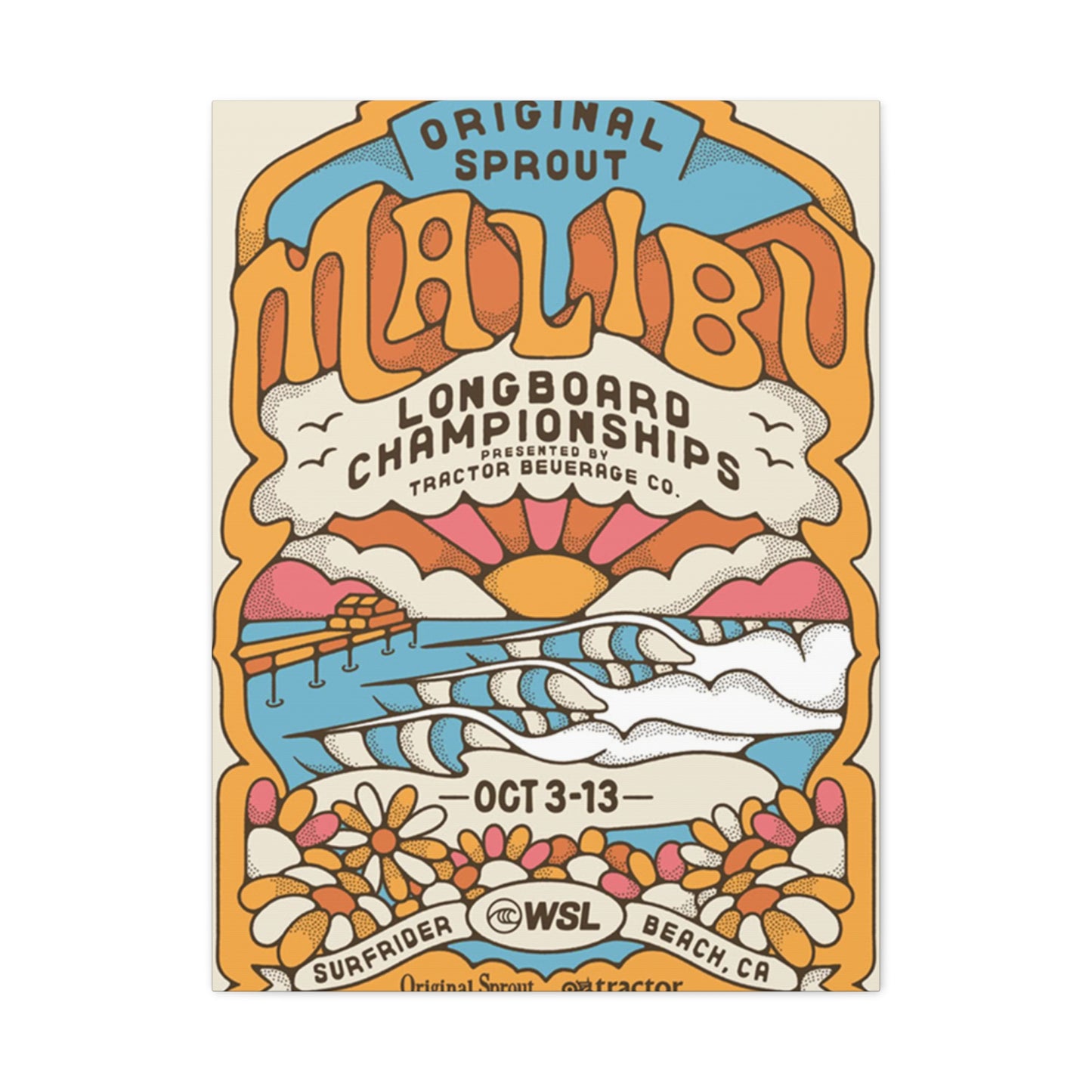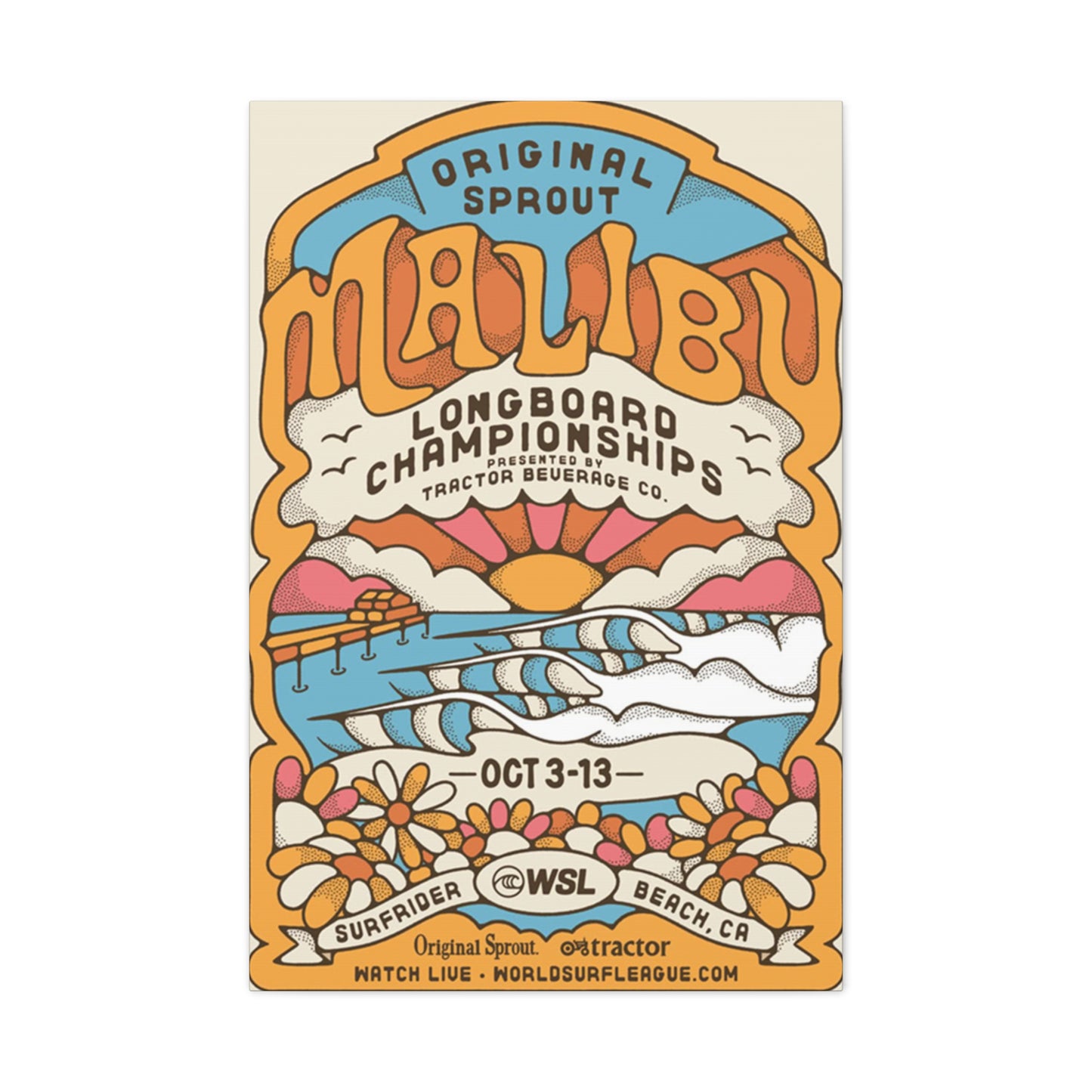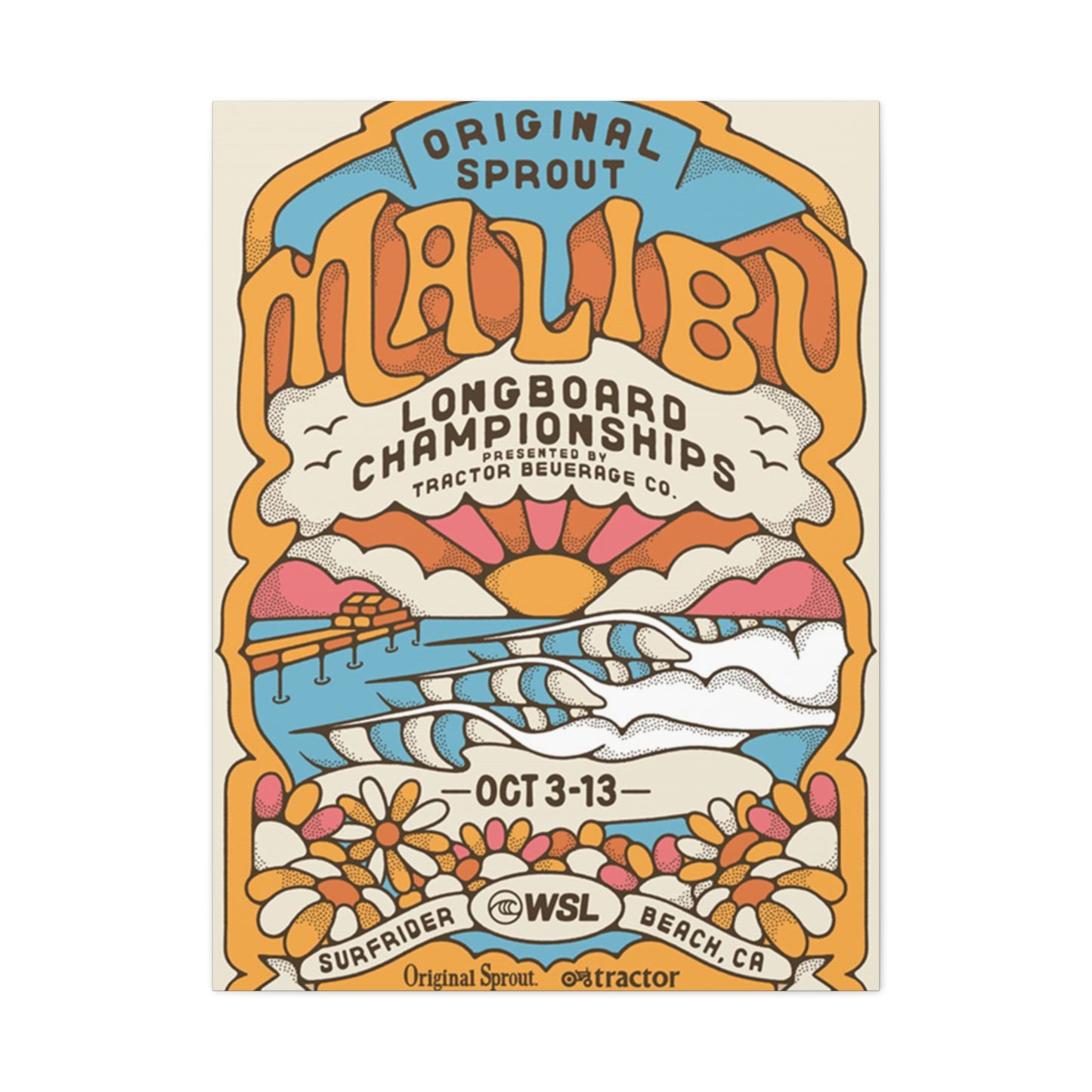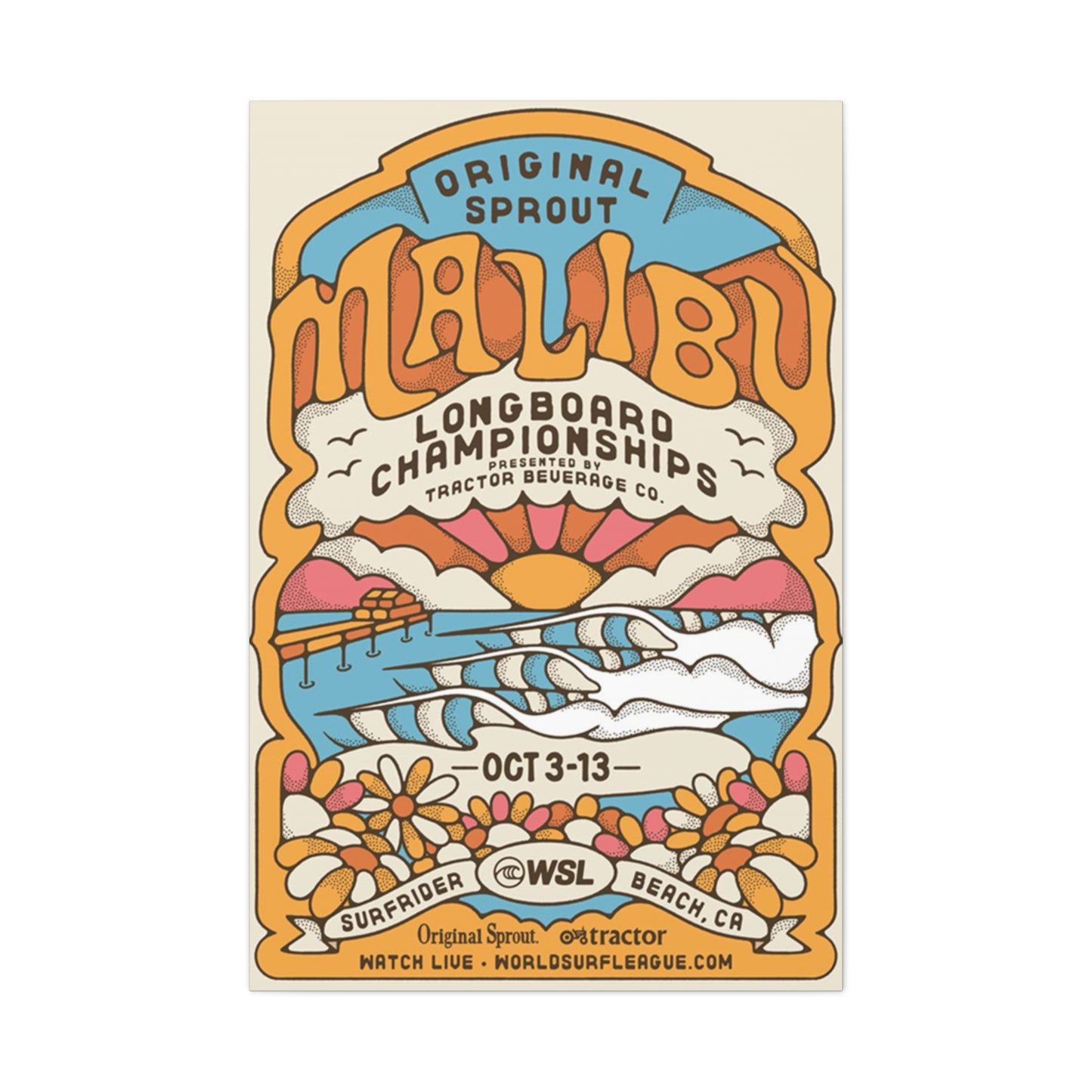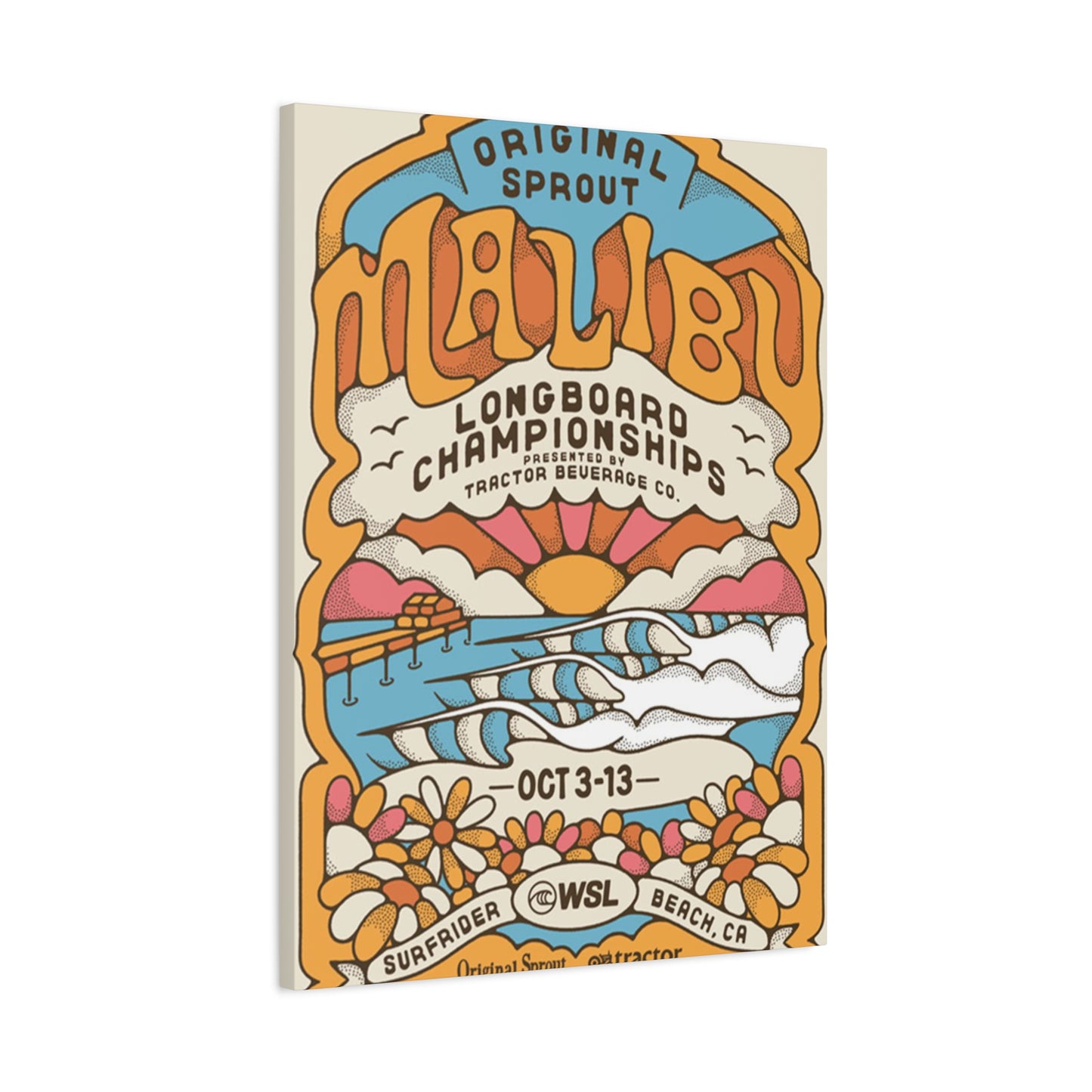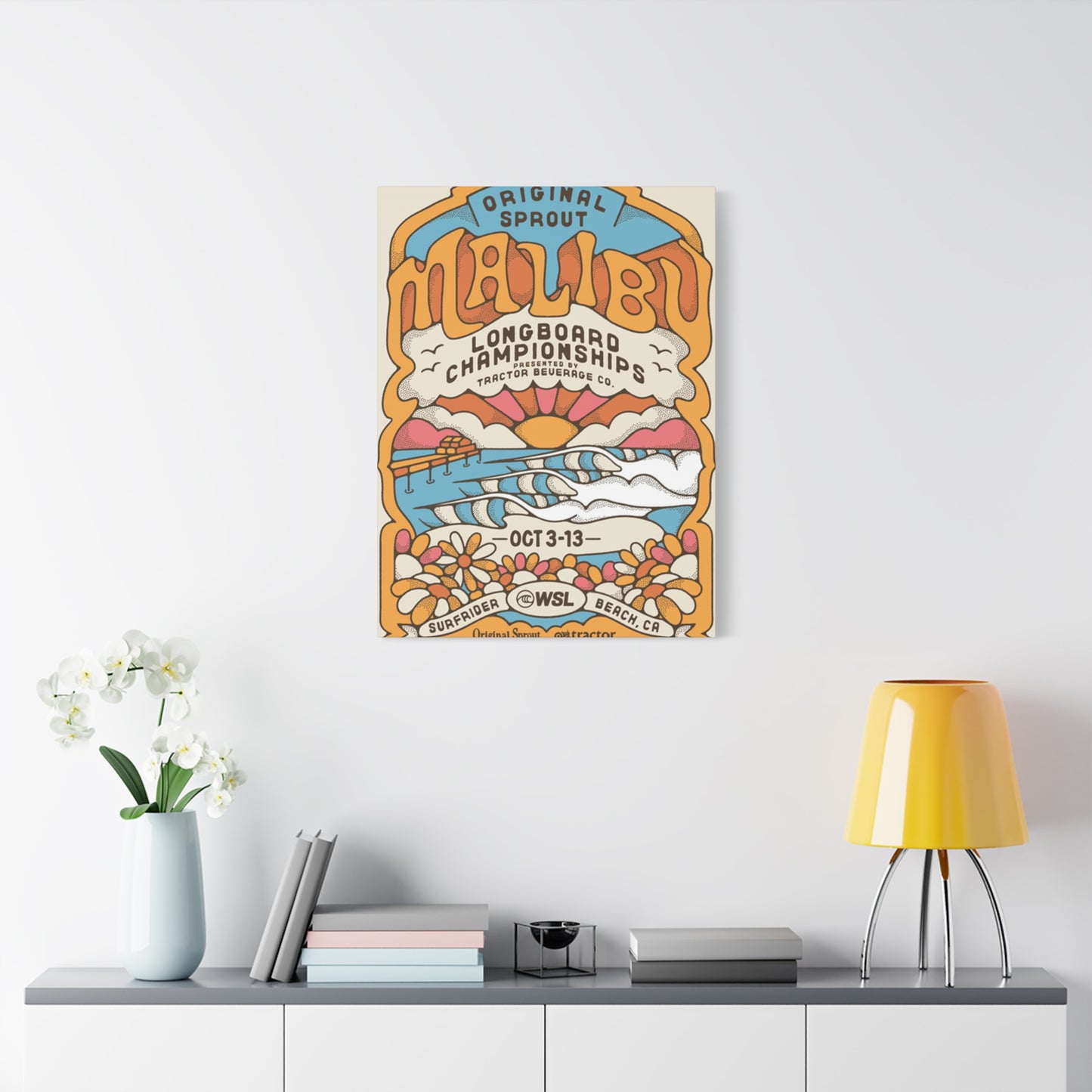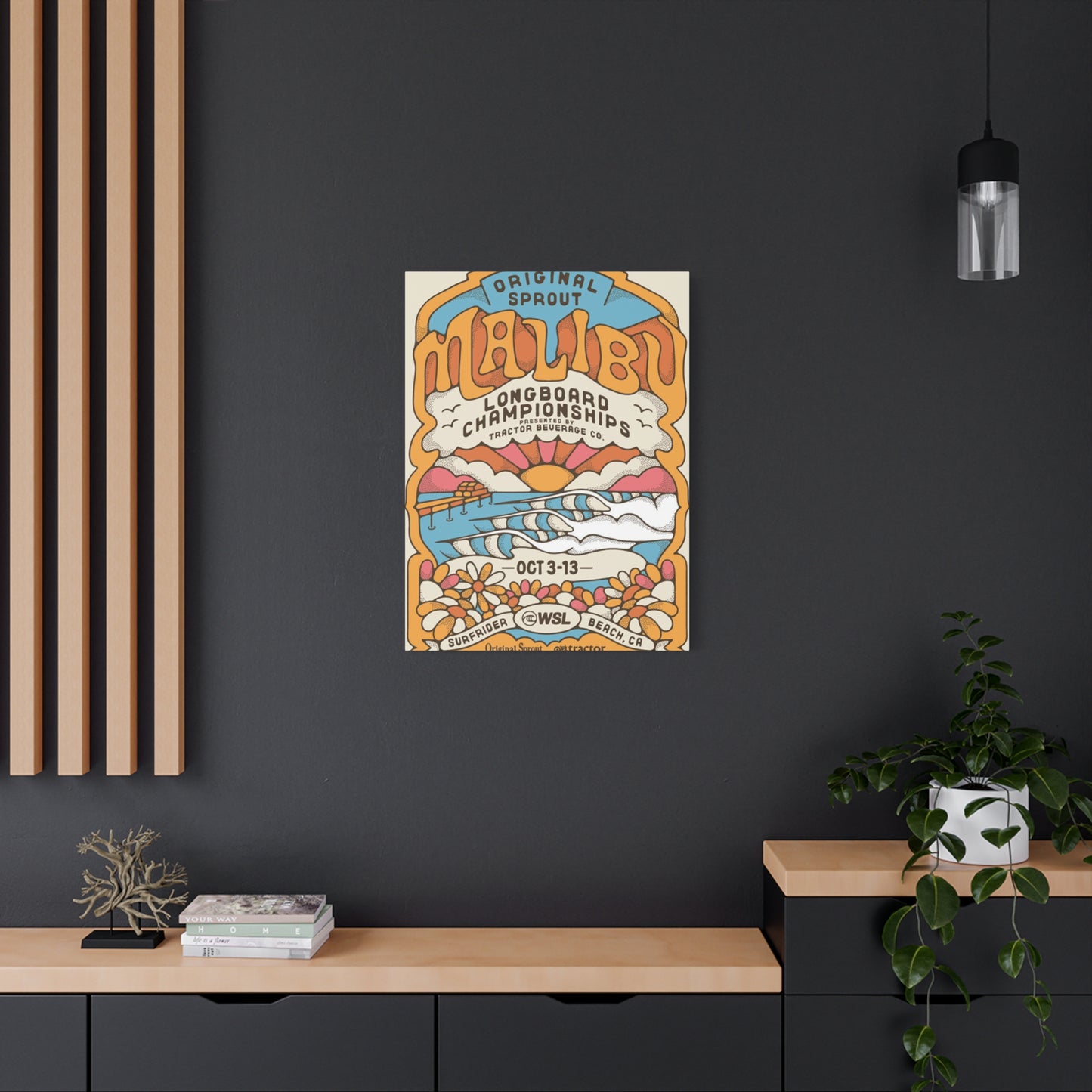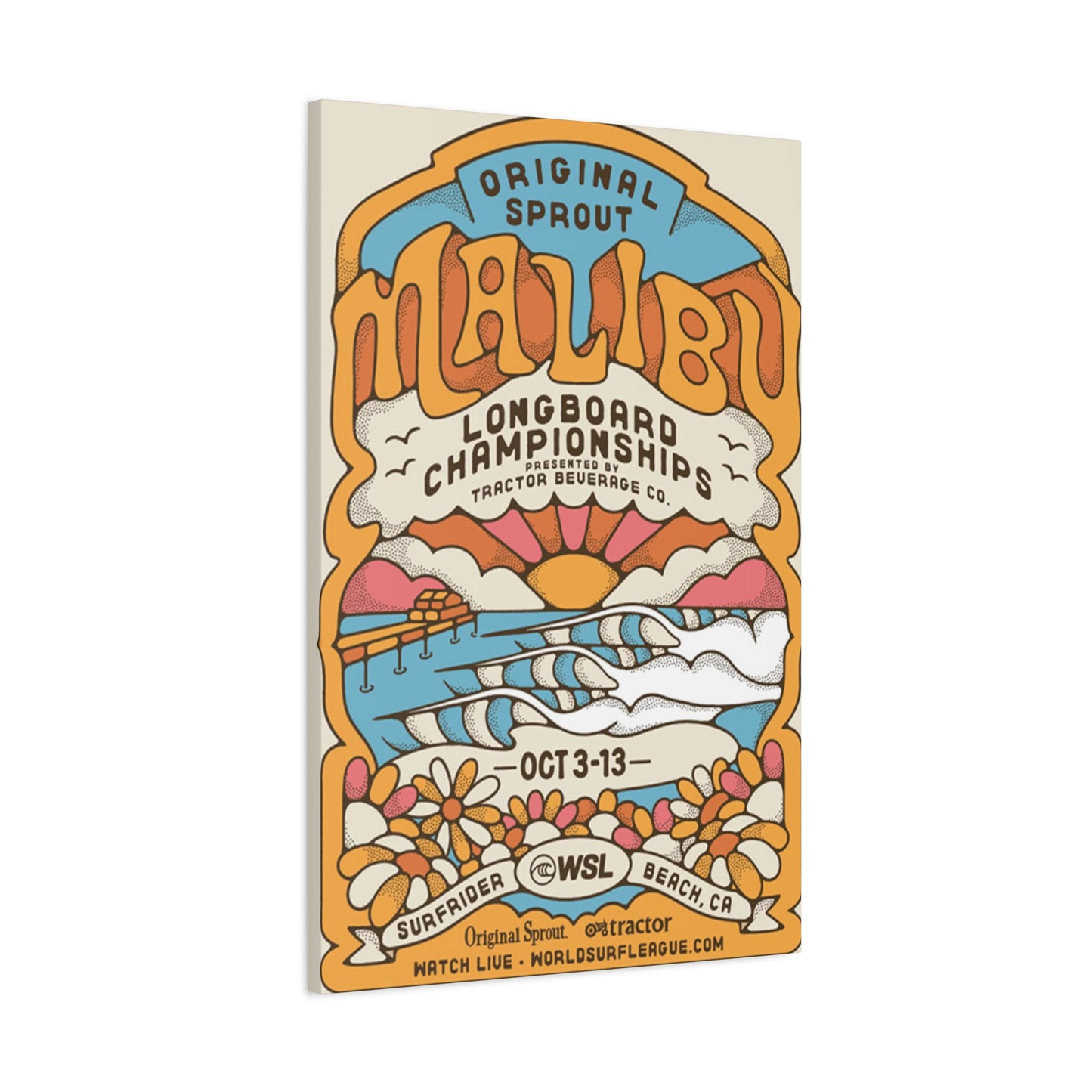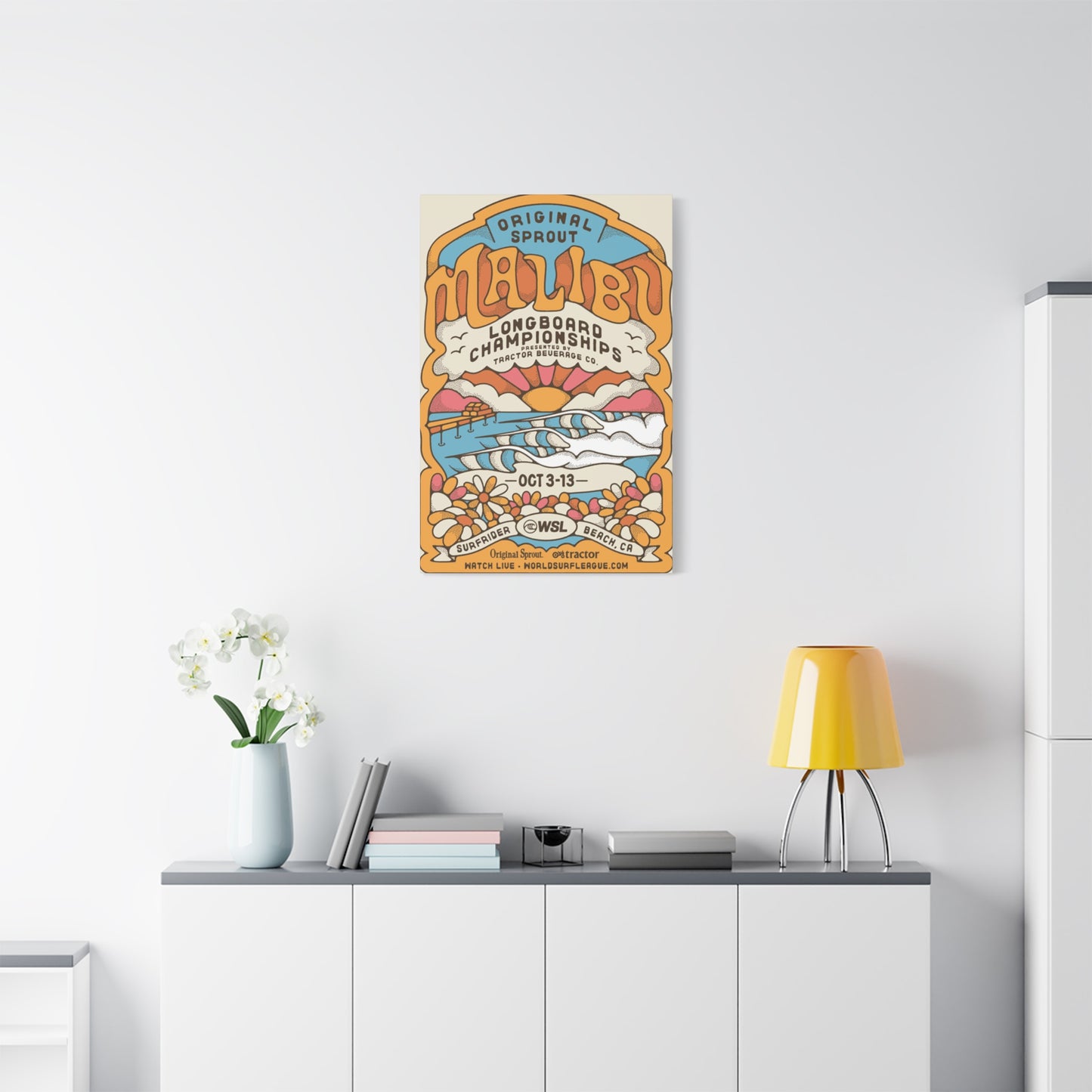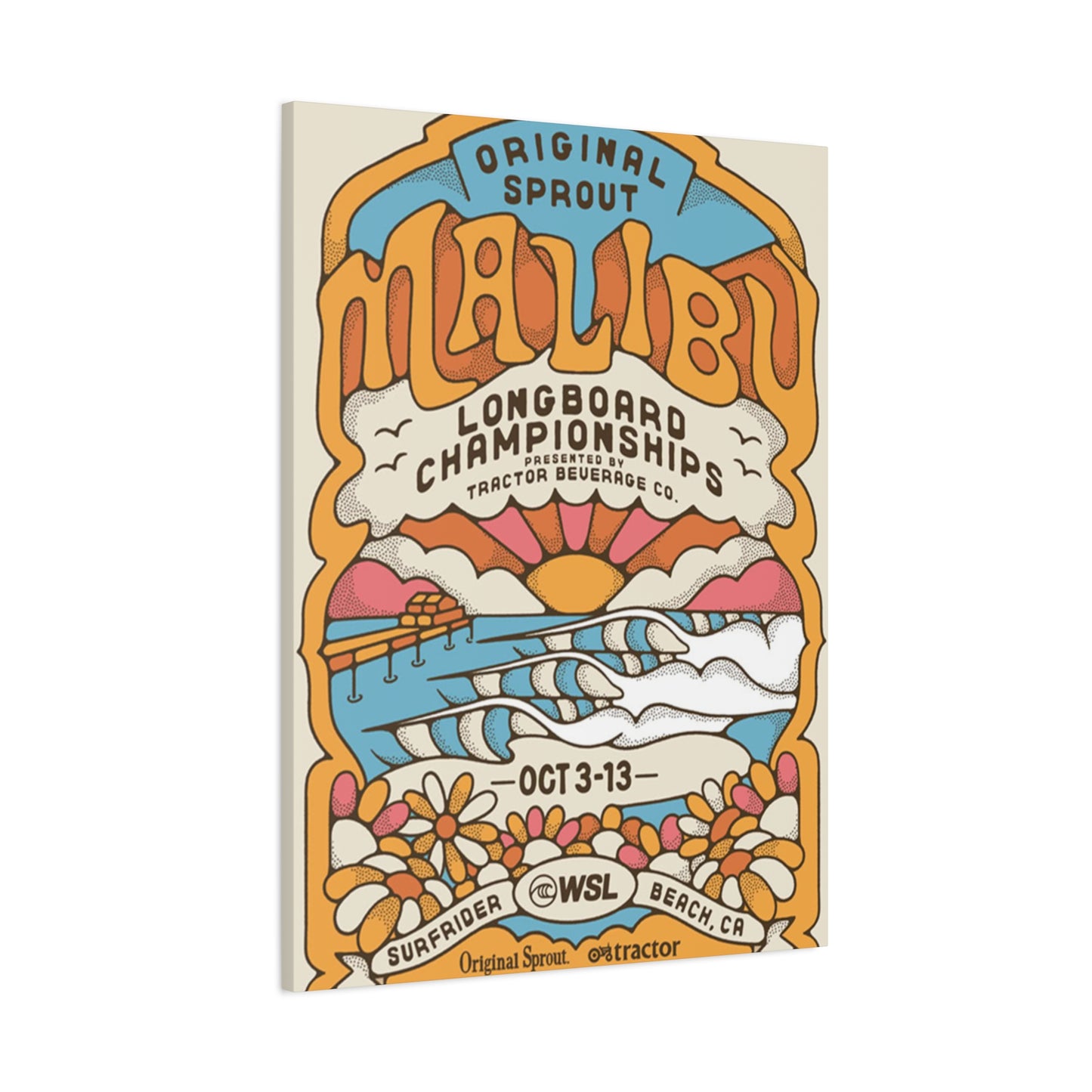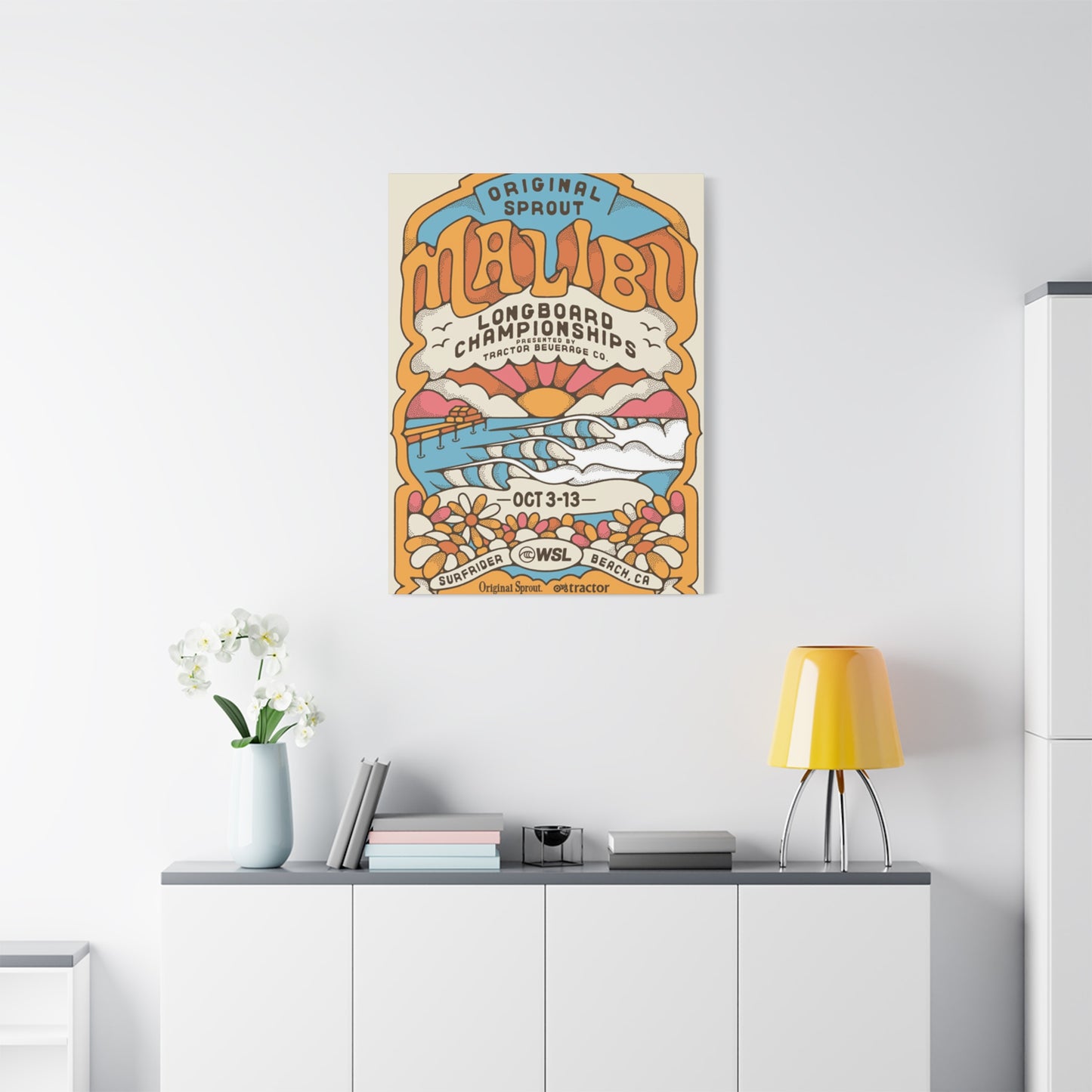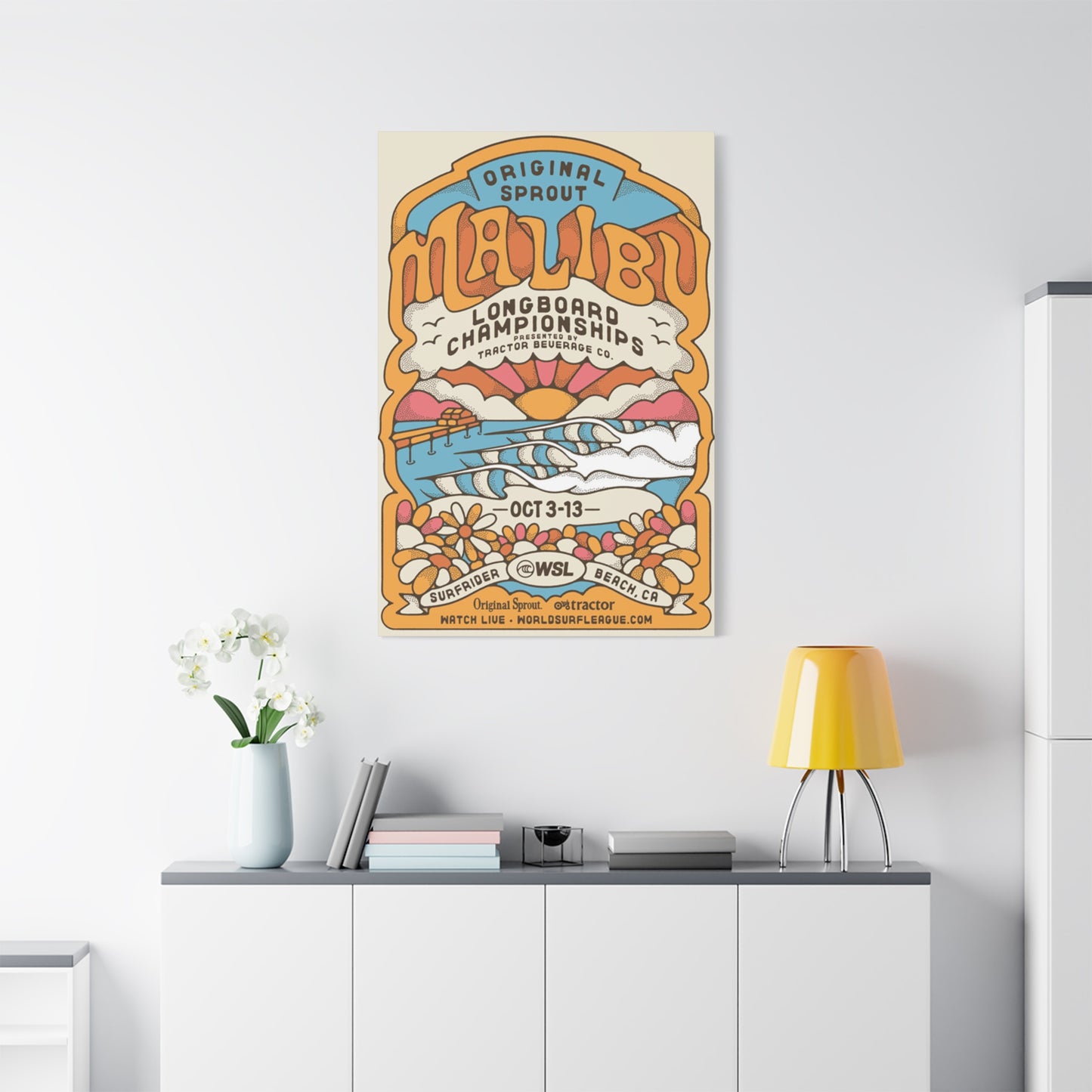The Ultimate Guide to Malibu Surf Poster Wall Art: Transform Your Space with Coastal Elegance
The fascination with ocean-inspired decoration has captured the hearts of interior design enthusiasts worldwide. When you bring the essence of California's most iconic coastline into your living space through carefully selected artwork, you create an atmosphere that speaks to both adventure and tranquility. The visual representation of waves crashing against sandy shores, surfers riding perfect swells, and golden sunsets over the Pacific Ocean offers more than mere decoration. These pieces serve as daily reminders of freedom, natural beauty, and the endless possibilities that lie beyond the horizon. The popularity of beach-themed artwork continues to grow as more people seek to incorporate elements of nature into their modern living environments, creating sanctuaries that provide escape from the demands of daily life.
The Rich History Behind California's Most Famous Surf Destination
Located along the stunning Pacific Coast Highway, this legendary stretch of coastline has earned its reputation as one of the world's premier wave-riding locations. The area became synonymous with beach culture during the 1950s and 1960s when a new generation discovered the perfect combination of consistent swells and ideal beach breaks. This historical significance extends beyond athletic achievement, representing a cultural movement that influenced music, fashion, and lifestyle choices for decades to come. The transformation of a quiet beach community into an international symbol of coastal living created imagery that continues to inspire artists and photographers. Understanding this heritage adds depth to any artwork featuring these iconic shores, connecting your space to a legacy of innovation, creativity, and connection with the natural world.
Exploring Different Artistic Styles for Ocean-Themed Decoration
The variety of artistic approaches available for coastal artwork ensures that every aesthetic preference can be satisfied. Photographic representations capture authentic moments with stunning clarity, preserving the raw power and beauty of nature in striking detail. These realistic portrayals appeal to those who appreciate documentary-style imagery that transports viewers directly to the shoreline. Alternatively, illustrated approaches offer creative interpretations that range from minimalist line drawings to vibrant, colorful compositions filled with energy and movement. Abstract representations take artistic liberty further, using color, shape, and texture to evoke the feeling of ocean environments without literal depiction. Vintage-inspired designs tap into nostalgia, recreating the aesthetic of classic travel advertisements and retro beach culture from past decades. Each style brings unique characteristics that can complement different interior design schemes, from contemporary minimalism to eclectic bohemian spaces.
Selecting the Perfect Size for Your Display Space
Determining the appropriate dimensions for your artwork requires careful consideration of several factors that influence visual impact and spatial harmony. Large-scale pieces measuring five feet or more create dramatic focal points that command attention and establish the aesthetic direction for entire rooms. These statement works excel in spacious areas with high ceilings and minimal competing visual elements, such as above sofas, beds, or in entryways. Medium-sized options ranging from two to four feet offer versatility, working well in various settings without overwhelming smaller spaces. These dimensions suit dining areas, hallways, home offices, and bedrooms where balanced decoration is desired. Smaller formats under two feet provide accent opportunities, perfect for creating gallery walls, filling awkward spaces, or adding coastal touches to bathrooms, closets, and reading nooks. The relationship between artwork size and wall space follows design principles suggesting that pieces should occupy approximately two-thirds to three-quarters of the available area for optimal visual balance.
Canvas Material Benefits and Quality Considerations
The substrate upon which artwork is printed significantly affects both aesthetic appearance and longevity. Premium cotton canvas offers superior texture and archival qualities that ensure colors remain vibrant for generations. This natural fiber provides excellent ink absorption, resulting in rich, deep tones that capture the full spectrum of ocean blues and sunset oranges. The slight texture of canvas adds dimension that flat paper prints cannot replicate, creating visual interest from multiple viewing angles. Polyester-cotton blends provide more affordable alternatives while maintaining acceptable quality standards for most residential applications. These synthetic options resist moisture and warping better than pure cotton, making them practical choices for bathrooms or humid environments. The weight of canvas, measured in ounces per square yard, indicates durability, with heavier options offering greater resistance to sagging and damage over time. Professional-grade canvases typically range from eight to twelve ounces, providing substantial feel and appearance that elevates the perceived value of your artwork.
Stretching and Mounting Techniques for Professional Presentation
The method by which canvas is prepared for display dramatically influences the final appearance and installation process. Gallery-wrapped canvas extends the printed image around the edges of wooden frames, eliminating the need for additional framing and creating a modern, clean aesthetic. This technique allows the artwork to appear as though it floats on the wall, with the image visible from multiple angles. The depth of the stretcher bars, typically ranging from three-quarters of an inch to two inches, affects the dimensional presence of the piece. Deeper frames create more substantial shadows and visual weight, particularly effective for larger works. Traditional mounting involves stretching canvas over frames with neutral edges, designed to be placed within decorative frames that complement your interior design. This approach offers flexibility in changing the surrounding frame to match evolving decor preferences. Proper stretching tension ensures the canvas remains taut without warping, preventing ripples and maintaining image clarity. Professional mounting services employ specialized tools and techniques that achieve uniform tension impossible to replicate with amateur methods.
Creating Gallery Wall Arrangements with Multiple Pieces
Combining several related artworks into cohesive displays amplifies visual impact while allowing creative expression through arrangement. Symmetrical layouts featuring identical or similarly sized pieces create formal, balanced compositions that convey order and intentionality. This approach works particularly well in traditional or transitional interiors where structure and predictability are valued. Asymmetrical arrangements offer dynamic, contemporary alternatives that feel more spontaneous and artistic. Mixing various sizes while maintaining consistent subject matter or color palettes achieves unity within diversity. The salon-style method, historically used in galleries and museums, involves densely clustering multiple pieces of varying dimensions to create an immersive visual experience. This technique transforms walls into curated collections that tell stories and reveal personality. Planning arrangements before installation using paper templates or digital tools prevents unnecessary holes and ensures satisfaction with spacing and alignment. The distance between pieces significantly affects whether they read as individual works or a unified installation, with two to six inches being typical spacing guidelines.
Matching Artwork to Various Interior Design Styles
Different decorating philosophies call for specific aesthetic approaches to achieve harmonious integration. Modern interiors characterized by clean lines, minimal ornamentation, and neutral palettes benefit from simple, graphic representations with limited color schemes. Black and white photography or monochromatic illustrations complement rather than compete with architectural features and furniture selections. Coastal and nautical themes naturally embrace beach imagery, though care should be taken to avoid cliché or overly literal interpretations that feel theme-park-like rather than sophisticated. Bohemian spaces welcome vibrant colors, eclectic mixing of styles, and layered textural elements that beach artwork naturally provides. The relaxed, collected-over-time aesthetic of boho design pairs beautifully with varied artistic interpretations of coastal themes. Scandinavian minimalism appreciates nature-inspired subjects rendered with restraint and plenty of negative space, emphasizing light and simplicity. Rustic and farmhouse styles connect with weathered, vintage-inspired pieces that suggest history and authenticity through aged effects and muted tones.
Optimal Placement Locations Throughout Your Home
Strategic positioning maximizes both visibility and thematic appropriateness of beach-themed decoration. Living rooms serve as primary display areas where artwork makes first impressions on guests while providing daily enjoyment for residents. Positioning pieces at eye level, approximately 57 to 60 inches from floor to center, ensures comfortable viewing without neck strain. Above seating furniture, maintain six to twelve inches between the furniture top and artwork bottom for proper visual connection. Bedrooms offer opportunities for more personal, serene imagery that supports relaxation and restful sleep. The wall opposite or above the bed provides natural focal points that frame the sleeping area. Bathrooms embrace coastal themes naturally, though humidity considerations require proper sealing and ventilation to prevent moisture damage. Hallways and stairwells benefit from sequential arrangements that create narrative progression as viewers move through spaces. Home offices gain inspiration and mental clarity from nature imagery that provides brief visual escapes during intensive work periods. Even kitchens and dining areas can incorporate food-safe, easy-to-clean canvas options that bring cohesion to open floor plans.
Lighting Techniques to Enhance Visual Impact
Proper illumination transforms good artwork into stunning centerpieces that captivate attention and reveal subtle details. Natural light provides the most accurate color rendering and changes throughout the day, creating dynamic viewing experiences. However, direct sunlight causes fading and deterioration, requiring strategic placement away from unfiltered windows or the use of UV-protective glazing. Ambient room lighting should provide general visibility without harsh shadows or glare on canvas surfaces. Positioning pieces perpendicular to windows rather than directly opposite prevents reflections that obscure imagery. Accent lighting using picture lights, track systems, or recessed fixtures adds drama and ensures artwork remains visible during evening hours. LED technology offers energy efficiency and minimal heat generation that won't damage delicate materials over time. The color temperature of bulbs affects how artwork appears, with warm white (2700-3000K) complementing traditional spaces and cool white (4000-5000K) supporting contemporary environments. Adjustable fixtures provide flexibility to highlight different pieces as your collection evolves or seasonal preferences change.
Protecting Your Investment Through Proper Care
Maintaining the appearance and value of canvas artwork requires minimal but consistent attention to environmental factors and cleaning practices. Dust accumulation dulls colors and obscures details over time, making regular gentle cleaning essential. Soft, dry microfiber cloths remove surface dust without scratching or damaging canvas texture. Avoid liquid cleaners unless specifically formulated for canvas, as moisture can cause warping, mold growth, or ink running. Humidity control prevents expansion and contraction that loosens stretcher bar tension and creates ripples. Ideal conditions maintain 40-60% relative humidity and temperatures between 65-75 degrees Fahrenheit. Extreme fluctuations stress materials and accelerate deterioration. Protect artwork from physical damage by avoiding high-traffic areas where accidental contact occurs frequently. When moving or storing pieces, wrap in acid-free paper or cloth rather than plastic, which traps moisture and promotes mildew. Periodic inspection identifies issues like loose mounting hardware, corner sagging, or color fading before they become severe problems requiring expensive restoration.
Understanding Print Production Methods and Quality
The technology used to transfer images onto canvas dramatically affects color accuracy, detail resolution, and long-term durability. Giclee printing represents the highest standard, utilizing archival inks and museum-quality processes that produce gallery-worthy results. This method employs millions of microscopic ink droplets to achieve photographic quality with exceptional color range and subtle tonal gradations. The term "giclee" derives from French, meaning "to spray," referencing the precise ink application technique. These prints often carry certifications and edition numbers that authenticate quality and collectibility. Standard digital printing offers more economical alternatives using similar technology with fewer quality controls and less expensive materials. While results may appear comparable initially, non-archival inks fade more rapidly when exposed to light and air. Resolution, measured in dots per inch, determines how sharp and detailed the final image appears. Professional printing requires minimum 300 DPI at the final output size to avoid visible pixelation or blurriness. The printer's color management system ensures consistency between digital files and physical prints, critical for accurately reproducing the subtle hues of ocean scenes.
Exploring Limited Edition and Artist-Signed Options
Collectible artwork carries additional value through exclusivity and artist authentication that mass-produced pieces cannot match. Limited editions restrict the total number of prints produced, creating scarcity that appeals to collectors and maintains investment value. These series typically range from 25 to 500 pieces, each numbered to indicate its position within the edition. Lower numbers often command premium prices due to perception of superior quality from fresh printing plates or equipment. Artist signatures and certificates of authenticity verify legitimacy and provide documentation important for insurance and resale purposes. Hand-embellished editions receive additional artistic touches from the original creator, making each piece unique despite being part of a series. These enhancements might include painted highlights, textures, or other dimensional elements that elevate the work beyond standard reproduction.
Seasonal Decorating Opportunities with Coastal Themes
The versatility of beach imagery allows creative rotation that keeps interiors feeling fresh without major renovation. Summer months naturally align with bright, energetic compositions featuring active wave riding, vibrant sunsets, and crowded beaches that celebrate the season's vitality. These lively scenes amplify the joy and freedom associated with warm weather and vacation mindsets. Autumn transitions welcome more subdued palettes featuring misty mornings, empty beaches, and softer lighting that reflects the season's contemplative character. These quieter interpretations maintain coastal connection while adapting to changing moods as days shorten. Winter decorating incorporates dramatic storm scenes, powerful swells, and moody skies that embrace the season's intensity while providing contrast to indoor coziness. The juxtaposition of outdoor ferocity with interior warmth creates compelling visual and emotional dynamics. Spring renewals introduce fresh, optimistic imagery featuring clear skies, gentle waves, and pastel tones that mirror nature's awakening. Rotating artwork seasonally prevents visual fatigue and demonstrates thoughtful curation that elevates your space beyond static decoration.
Combining Coastal Art with Complementary Decor Elements
Artwork achieves maximum impact when supported by thoughtful accessorizing that reinforces thematic elements without redundancy. Natural materials like driftwood, shells, and coral collected during beach visits provide authentic textural contrast that connects artwork to tangible experiences. These organic elements introduce three-dimensional interest while maintaining coastal themes through form rather than literal imagery. Textile selections in complementary colors extend the palette established by artwork throughout the space via throw pillows, blankets, and window treatments. Subtle pattern incorporation through stripes, waves, or organic shapes echoes visual elements without overwhelming the primary focal point. Furniture choices in natural woods, woven fibers, or weathered finishes support casual, relaxed aesthetics associated with coastal living. These selections create cohesive environments that feel intentionally designed rather than accidentally assembled. Lighting fixtures inspired by nautical elements or featuring natural materials like rope, glass, or bleached wood reinforce themes while providing essential functionality. The goal involves creating layers of reinforcing elements that collectively establish strong sense of place without relying on any single piece.
Understanding Copyright and Licensing for Art Purchases
Legal considerations surrounding artwork ownership affect your rights to display, reproduce, and potentially resell pieces. Purchasing physical prints typically grants only ownership of that specific object, not intellectual property rights to the underlying image. This distinction means you cannot legally reproduce, distribute, or create derivative works without additional permissions. Commercial use in businesses, publications, or promotional materials requires explicit licensing that vendors usually offer at premium prices. These commercial licenses specify usage parameters including duration, geographic scope, and distribution methods. Personal use for home decoration faces minimal restrictions, allowing display in private residences without additional fees or permissions. Reselling purchased artwork generally faces no legal barriers provided you're transferring the original physical piece rather than creating copies. However, some limited edition agreements restrict resale or require notification to ensure authenticity tracking.
Understanding Artistic Movements Influencing Coastal Art
Various art historical periods and philosophies inform contemporary beach imagery in ways that add depth and context to your selections. Impressionism's emphasis on capturing fleeting light effects and atmospheric conditions translates beautifully to ocean scenes where weather, time of day, and seasonal changes create infinite variations. This movement's loose brushwork and emphasis on color over detail influences many modern interpretations. Realism's commitment to accurate, unidealized depiction appeals to those who appreciate documentary authenticity in their artwork. Photographic approaches continue this tradition, showing beaches and waves exactly as they appear. Abstract expressionism liberates artists from literal representation, allowing pure exploration of color, gesture, and emotion inspired by coastal experiences. These interpretations convey feelings of the ocean rather than specific scenes. Pop art's bold colors, graphic simplicity, and cultural commentary manifest in vintage-inspired beach posters and contemporary illustrations that celebrate beach culture iconography.
Regional Variations in Beach Art Aesthetics and Subjects
Coastal imagery varies significantly based on geographic location and local culture, offering diverse options beyond California shores. Pacific Northwest beaches feature dramatic rocky coastlines, old-growth forests meeting the sea, and moody weather that creates atmospheric, contemplative artwork. These cooler, more rugged scenes suit different aesthetics than sunny California beaches. East Coast imagery encompasses everything from New England's lighthouse-dotted shores and traditional seaside villages to Florida's tropical paradise aesthetics. These variations allow selection based on personal history or preferred vacation destinations. Hawaiian coastal art introduces tropical elements like palm trees, volcanic black sand beaches, and cultural traditions that distinguish it from mainland American beach imagery. The vibrant colors and unique geology create immediately recognizable aesthetics. Mediterranean and European beach art features architectural elements, different color palettes, and cultural contexts that provide international flavor.
The Science of Visual Perception and Artwork Engagement
Understanding how human eyes and brains process visual information helps optimize artwork selection and placement for maximum impact. The human eye naturally gravitates toward areas of highest contrast, meaning the meeting point of sky and water in horizon lines immediately captures attention. Positioning these critical compositional elements at strategic heights ensures comfortable viewing. Color temperature affects perceived distance, with cool blues receding visually while warm oranges advance. This phenomenon explains why sunsets feel immersive despite being two-dimensional representations. Skilled artists manipulate these relationships to create depth and dimension. The rule of thirds divides compositions into nine equal sections, with the most compelling placements occurring at the four intersection points rather than dead center. Recognizing this pattern helps you evaluate composition quality and predict where your eyes will naturally travel.
Long-Term Value Appreciation and Art Investment Potential
While most decorative artwork serves primarily aesthetic rather than financial purposes, certain pieces may appreciate over time under specific conditions. Limited edition prints from established artists with strong markets show most consistent value retention and growth potential. Researching artist reputations, exhibition histories, and secondary market sales provides insight into investment viability. Proper documentation including certificates of authenticity, purchase receipts, and edition numbers becomes essential for proving provenance during future sales. These documents should be stored safely and transferred with artwork if sold. Condition dramatically affects value, making proper care and environmental control critical for maintaining investment potential. Even small damages significantly reduce resale prices on collectible pieces. Trending styles and subjects influence market values in ways difficult to predict, though classic subjects and techniques typically maintain steadier demand than trendy approaches. Purchasing based purely on personal enjoyment rather than investment reduces disappointment if anticipated appreciation doesn't materialize. Insurance appraisals for valuable collections provide professional valuations useful for coverage purposes and understanding current market values.
Cultural Sensitivity and Representation in Beach Imagery
Thoughtful consideration of how coastal communities and cultures appear in artwork demonstrates respect and awareness that enhances rather than exploits. Indigenous coastal peoples maintain deep spiritual connections to ocean environments that predate recreational beach culture by millennia. Artwork featuring sacred sites, traditional practices, or cultural symbols should come from community members or artists with explicit permission and proper attribution. Commercial exploitation of indigenous imagery without compensation or consent perpetuates harmful colonial patterns. Representations of beach communities should avoid stereotypes that reduce diverse populations to simplistic caricatures serving tourist fantasies. Authentic depictions respect complexity and dignity of local residents rather than treating them as exotic attractions. Environmental contexts matter, as pristine beach imagery from locations facing severe ecological threats can inadvertently contribute to greenwashing that obscures urgent conservation needs.
Technological Advances Transforming Art Production and Access
Digital innovations continue revolutionizing how artwork gets created, distributed, and experienced by consumers worldwide. High-resolution photography captures unprecedented detail that allows enormous prints without quality loss, bringing gallery-quality images to residential markets at accessible prices. Drone technology provides aerial perspectives previously requiring expensive helicopter rentals, expanding creative possibilities for coastal photography. These bird's-eye views create stunning compositions impossible from ground level. Online marketplaces connect artists directly with consumers, eliminating gallery overhead that traditionally inflated prices while reducing artist compensation. This democratization benefits both creators and buyers through fairer economics. Virtual reality previews allow homeowners to visualize artwork in their actual spaces using smartphone cameras and augmented reality applications. This technology reduces purchase uncertainty and returns by ensuring satisfied customers.
Furniture Arrangements That Complement Beach Artwork
The placement and style of furnishings significantly impacts how artwork is perceived and appreciated within overall room design. Low-profile furniture creates vertical space that emphasizes wall displays, making artwork feel more prominent and commanding. This approach works particularly well in rooms with low ceilings where maintaining visual height is challenging. Furniture arrangements that create clear sightlines to featured artwork from primary seating positions ensure guests naturally notice and appreciate your selections. Angling sofas and chairs toward wall displays rather than exclusively toward televisions or windows demonstrates that art holds importance in your space. Natural material furniture in woods, rattans, and linens echoes organic themes present in coastal artwork while avoiding competing for attention through excessive ornamentation or bold patterns. These understated selections create harmonious backdrops that allow art to shine.
Weather and Atmospheric Effects in Coastal Photography
The conditions under which beach photographs are captured dramatically influence mood, color palette, and emotional resonance of resulting artwork. Golden hour lighting occurring shortly after sunrise or before sunset bathes scenes in warm, flattering illumination that enhances skin tones and creates long dramatic shadows. This magical light transforms ordinary beaches into extraordinary landscapes that photograph beautifully. Overcast conditions provide soft, even lighting that eliminates harsh shadows and reduces contrast, creating serene, contemplative imagery. These cloudy day shots offer subtlety and nuance that sunny scenes sometimes lack. Storm photography captures nature's raw power through dark skies, churning seas, and dramatic cloud formations that inspire awe and respect for natural forces. These intense images work well in spaces seeking drama and energy.
Typography and Text Integration in Decorative Prints
Incorporating words into visual compositions adds meaning, personalization, and graphic interest when executed thoughtfully. Inspirational quotes related to ocean themes, adventure, and freedom reinforce emotional connections viewers feel toward coastal imagery. Selecting quotations that genuinely resonate rather than generic phrases ensures authenticity. Coordinate typography placement carefully to complement rather than obscure visual elements, using negative space areas where text won't compete with important details. Font selection communicates as much as word choice, with serif typefaces conveying tradition and elegance while sans-serif options feel modern and clean. Script fonts add personality and handcrafted feeling but require careful sizing for legibility. Geographic coordinates marking special locations provide personalized elements that carry deep meaning without explaining themselves to casual observers. These numerical references create conversation starters while maintaining visual simplicity. Date commemoration marks significant occasions like weddings, anniversaries, or milestone trips through subtle text integration.
The Connection Between Ocean Art and Mental Wellness
Scientific research increasingly validates what intuition suggests about nature imagery's therapeutic benefits for psychological and emotional health. Hospital studies demonstrate that patients with views of nature or nature artwork experience reduced pain medication needs, shorter recovery times, and lower stress hormone levels compared to those facing blank walls. These measurable outcomes validate art's role in healing environments. Attention restoration theory explains how nature imagery provides effortless fascination that allows directed attention mechanisms to rest and recover from mental fatigue. The gentle movement and patterns of waves offer perfect subjects for this restorative viewing. Biophilic design principles recognize humans' innate need for connection with natural world, even when living in urban environments far from actual coastlines. Incorporating ocean imagery satisfies these deep psychological requirements for nature contact. Meditation and mindfulness practices frequently employ ocean imagery and sounds because water's rhythmic patterns naturally induce relaxed, focused mental states conducive to contemplation. Artwork can support these practices during daily meditation sessions.
Maintenance Schedules for Long-Term Artwork Preservation
Establishing regular care routines prevents gradual degradation that diminishes appearance and value over time through simple, manageable tasks. Monthly dusting using soft brushes or microfiber cloths removes accumulation before it becomes embedded in canvas texture. This quick maintenance takes minutes but prevents more intensive cleaning later. Quarterly inspections examine mounting hardware tightness, frame condition, and any signs of pest activity, moisture damage, or color fading. Early detection allows addressing issues before they become serious problems requiring professional restoration. Annual deep cleaning may involve very gentle wiping with slightly dampened cloths on non-porous surfaces, though canvas should remain dry unless professional cleaning is necessary. This thorough review also provides opportunity to rotate seasonal artwork if you maintain multiple collections. Every three to five years, professional assessment by art conservators identifies developing issues invisible to untrained eyes and provides expert recommendations for specialized care. These professionals offer services like frame repair, canvas retensioning, and surface cleaning using techniques unavailable to consumers.
Shipping and Handling Considerations for Canvas Prints
Proper packaging and transportation methods protect artwork during moves or when purchasing from distant sellers. Professional shipping services specializing in art and fragile items understand necessary precautions that general carriers may overlook. These specialists use appropriate materials and handling procedures that justify premium costs for valuable pieces. Rigid flat shipping for smaller works prevents bending and creasing that permanently damage canvas. Custom-sized boxes with reinforced corners distribute impact forces away from artwork itself. Rolled shipping offers economical alternatives for larger pieces, though rolling must be done with printed surface facing outward to prevent cracking. This method requires restretch upon arrival, adding complexity and cost. Corner protectors cushion vulnerable frame edges where damage most commonly occurs during handling and transport. These inexpensive additions prevent countless ruined artworks.
Creating Themed Collections Around Specific Subjects
Developing focused collections around particular coastal elements creates cohesive narratives and demonstrates curatorial vision beyond random accumulation. Wave-focused collections celebrate the ocean's most iconic visual element through varied interpretations ranging from scientific close-ups revealing water physics to abstract representations capturing energy and motion. This singular focus allows deep exploration while maintaining obvious thematic unity. Sunset and sunrise collections document daily transformations when changing light creates magical color displays unique to coastal locations. Grouping multiple stages of single sunset or comparing different locations provides fascinating visual comparisons. Wildlife-centered selections feature the diverse creatures inhabiting coastal ecosystems, from seabirds and dolphins to tide pool invertebrates and kelp forest inhabitants.
These collections appeal to nature enthusiasts while serving educational purposes. Architectural focus on beach communities, piers, lifeguard towers, and coastal landmarks documents human relationship with shorelines through built environment. This approach suits those appreciating history and human stories alongside natural beauty. Equipment and activity collections featuring surfboards, beach gear, and people enjoying coastal recreation celebrate beach culture lifestyle and active pursuits. These energetic selections work well in fitness-minded households or game rooms. Seasonal collections documenting same locations across different times of year reveal nature's cycles and changing moods, creating sophisticated displays that demonstrate photographic commitment and artistic vision. Geographic specificity collecting multiple views from single beloved location creates deep connection to particular place while showcasing its diverse aspects and hidden details.
Understanding Aspect Ratios and Proportional Harmony
The relationship between width and height in artwork significantly affects compatibility with different spaces and aesthetic sensibilities. Horizontal orientations naturally suit spaces above sofas, beds, and console tables where width exceeds height. These landscape formats echo coastal horizon lines and create visual stability. Standard ratios like 2:3 or 3:4 match common photography formats and feel balanced without being perfectly square. Vertical orientations work well in narrow spaces like hallways, beside doorways, or flanking windows where height is available but width is limited.
These portrait formats can make rooms feel taller and more elegant. Panoramic formats with extreme width-to-height ratios create dramatic impact and work beautifully for capturing expansive coastal vistas and long stretches of shoreline. These specialized formats require significant wall space but provide unique visual experiences. Square formats offer balanced, modern aesthetics that work well in contemporary interiors and grid-based gallery wall arrangements. This format feels intentional and geometric compared to standard rectangles. Matching artwork proportions to room dimensions and furniture creates visual harmony, with horizontal pieces complementing horizontal elements and vice versa. Awareness of golden ratio proportions found throughout nature helps identify particularly pleasing dimensional relationships that feel intuitively right. Multiple pieces should maintain consistent or intentionally varied aspect ratios based on whether unified or dynamic compositions are desired.
Professional Photography Equipment and Techniques
Understanding the tools and methods behind high-quality coastal photography helps appreciate the skill required and informs future purchase decisions. Professional camera bodies with weather sealing protect sensitive electronics from salt spray, sand, and moisture inherent to beach environments. This specialized equipment allows photographers to work in conditions that would damage consumer gear. Wide-angle lenses capture expansive vistas and create sense of immersion that transports viewers to the scene. These specialized optics require significant investment and technical expertise. Telephoto lenses compress perspective and isolate distant details like surfers on waves or seabirds in flight. This equipment enables intimate perspectives impossible to achieve safely or practically.
Tripods provide stability for long exposures, low-light shooting, and consistent framing across multiple shots. Professional models resist wind and withstand sandy conditions. Neutral density filters reduce light entering cameras, allowing long exposures during bright daylight that smooth water motion and capture cloud movement. These technical tools create ethereal effects that distinguish professional work. Polarizing filters reduce reflections and glare from water surfaces while enhancing color saturation and contrast. The resulting images show clearer water detail and richer skies. Post-processing expertise in software allows precise color correction, exposure adjustment, and compositional refinement that maximizes each capture's potential. This digital darkroom work separates amateur snapshots from gallery-worthy fine art.
Seasonal Light Changes and Artwork Perception
Natural illumination varies dramatically throughout the year, affecting how colors appear and which details become visible at different times. Summer's intense, extended daylight hours reveal subtle gradations and fine details that shorter winter days obscure. This abundance of natural light flatters bright, saturated colors and complex compositions. Winter's weaker, angled sunlight creates warmer color casts that enhance golden tones while potentially dulling cooler blues. Awareness of these shifts helps predict seasonal appearance variations. Morning light entering east-facing rooms provides cool, clear illumination ideal for viewing blue ocean scenes with maximum color accuracy. This orientation suits spaces where artwork appreciation occurs during breakfast or morning routines.
Evening light from western exposures bathes artwork in warm, golden tones that enhance sunset imagery while altering appearance of daytime beach scenes. This consideration matters when artwork must look good during primary usage hours. Northern exposure provides consistent, neutral illumination throughout the day and year, considered ideal by artists and designers for color-critical applications. This orientation prevents the dramatic shifts seen in other exposures. Southern exposure delivers maximum brightness but requires UV protection to prevent fading. The intensity and consistency make this orientation popular but demanding. Seasonal rotation moving artwork to different locations throughout the home optimizes lighting conditions for each piece while refreshing visual environment. This practice requires planning but maximizes appreciation of entire collection.
Digital Displays and Emerging Technologies
Innovative alternatives to traditional printed artwork introduce dynamic possibilities for displaying coastal imagery in constantly evolving ways. Digital picture frames with high-resolution screens display thousands of images in rotating sequences, allowing single frame to showcase entire photograph collections. These devices now rival print quality while offering unlimited variety. Smart displays integrate with home automation systems, adjusting displayed artwork based on time of day, weather, or music playing. This responsive technology creates living spaces that adapt to mood and activity. Projection mapping transforms entire walls into immersive coastal environments, creating theatrical experiences impossible with static prints. These high-end installations suit dedicated media rooms or entertainment spaces.
NFT artwork and digital collectibles represent emerging markets where unique digital files carry value through blockchain authentication. This controversial space combines art, technology, and speculation. Augmented reality applications overlay digital enhancements onto physical artwork, adding layers of information, animation, or interactive elements viewable through smartphones. This hybrid approach merges physical and digital experiences. Electronic ink displays offer paper-like appearance without backlighting, creating gentle presentation similar to traditional prints while allowing content changes. These specialized screens consume minimal power and work in bright light. Video loops of crashing waves and beach scenes introduce motion and sound, though perpetual movement can become distracting in spaces meant for relaxation. These displays work better in commercial or entertainment contexts than bedrooms.
Gift-Giving Opportunities with Coastal Artwork
Beach-themed artwork makes meaningful presents for various occasions and recipients who appreciate these universal subjects. Housewarming gifts featuring new homeowners' favorite beach destinations or dream vacation spots celebrate their milestone while adding personal touches to blank walls. Including framing and hanging hardware ensures ready-to-display convenience. Wedding gifts showcasing honeymoon locations or venues become cherished mementos of couples' special days. Personalization through added dates or coordinates enhances sentimental value. Retirement presents marking new chapters focused on leisure and travel acknowledge these transitions while providing decoration for downsized homes or vacation properties. Beach themes align with retirement dreams of coastal living.
Graduation gifts marking completion of coastal college towns or celebrating beach-loving students combine relevance with practical utility for furnishing first apartments. Mother's Day and Father's Day opportunities leverage family beach memories and vacation photographs transformed into thoughtful, personal artwork rather than generic commercial gifts. Anniversary celebrations referencing proposal locations, wedding venues, or favorite vacation destinations demonstrate thoughtfulness and shared memory celebration. Birthday presents for beach enthusiasts, surfers, and ocean lovers show attention to recipients' passions and interests. Holiday gifts offering universal appeal work well for difficult-to-shop-for recipients, with beach themes being generally appreciated across age groups and style preferences. Sympathy gifts featuring peaceful coastal scenes provide comfort and meditation focal points during difficult times, offering gentle beauty without demanding joy.
Addressing Common Mistakes in Artwork Selection and Display
Avoiding frequent errors ensures artwork enhances rather than detracts from interior design effectiveness. Hanging too high ranks among the most common mistakes, with artwork centers typically needing to be 57 to 60 inches from floor. This museum standard ensures comfortable viewing without neck strain. Incorrect proportions where artwork seems too small or too large for its location creates visual imbalance that undermines otherwise good design. Measuring and using templates prevents this costly error. Ignoring room function leads to inappropriate subject matter like energetic beach parties in serene bedrooms or contemplative empty shores in lively family rooms. Matching imagery mood to space purpose improves functionality. Over-coordination where everything matches exactly creates sterile, showroom appearances lacking personality and authenticity. Intentional variation within cohesive themes feels more lived-in and genuine.
Neglecting lighting leaves artwork invisible during evening hours when spaces are most used. Planning illumination during initial installation prevents this oversight. Following trends blindly results in dated-looking interiors within few years as fads pass. Choosing timeless subjects and styles ensures long-term satisfaction. Buying impulsively without considering existing colors, furniture, and space requirements leads to pieces that don't work with surroundings. Patient, thoughtful selection produces better results. Ignoring quality in favor of low prices yields disappointing results that require replacement, ultimately costing more than investing in better pieces initially. Balancing budget with quality expectations prevents regret. Fearing commitment leads to living with blank walls indefinitely rather than making decisions and potentially making changes later as taste evolves. Embracing artwork as changeable rather than permanent reduces pressure.
Building Relationships with Artists and Galleries
Developing ongoing connections with creators and sellers provides benefits beyond individual purchases throughout your collecting journey. Following artists on social media platforms offers early access to new releases, behind-the-scenes content, and special pricing for loyal supporters. These relationships often yield exclusive opportunities. Commissioning custom work allows input throughout the creative process, resulting in unique pieces perfectly tailored to your specifications and spaces. This collaborative approach creates deeper investment in final artwork. Attending local art fairs and gallery openings provides face-to-face interactions that build genuine relationships while supporting creative communities. These events offer education about artistic processes and inspiration for future collecting. Providing testimonials and reviews helps artists gain exposure while documenting your collection's provenance and your relationship with work.
This mutual support strengthens the creative economy. Requesting artist statements and background information adds context that enriches understanding and appreciation of artwork's meaning and creation story. Many creators happily provide these insights when asked. Joining mailing lists ensures awareness of sales, new releases, and special events that casual browsers miss. This insider access benefits serious collectors building substantial collections. Referring friends and family to artists you appreciate supports their businesses while sharing discoveries with your social circle. Word-of-mouth remains powerful marketing that artists deeply value. Collecting multiple pieces by same artist demonstrates commitment and can result in price breaks or special consideration for valued patrons. These developing relationships often become personally meaningful beyond transactional interactions.
Conclusion:
The journey of incorporating ocean-inspired artwork into your living environment represents far more than simple decoration. It reflects a deeper connection to the natural world, an appreciation for artistic expression, and a commitment to creating spaces that nourish both aesthetic sensibilities and emotional wellbeing. Throughout this comprehensive exploration, we have examined the multifaceted considerations that transform casual artwork purchases into thoughtful curation reflecting personal values and enhancing daily life quality.
The enduring appeal of coastal imagery transcends temporary design trends because it connects to fundamental human experiences and psychological needs. Whether through dramatic wave photography that captures nature's raw power, serene sunset paintings that invite contemplation, or abstract interpretations that spark imagination, these pieces bring the calming, inspiring essence of shorelines into homes far from actual beaches. This connection to water and natural beauty fulfills deep biophilic needs while creating visual interest that prevents monotony in our living spaces.
Understanding the technical aspects of canvas quality, printing methods, and proper installation ensures that your investment maintains its beauty and value for years to come. The knowledge gained about color psychology, spatial relationships, and lighting considerations empowers you to make informed decisions that maximize visual impact while avoiding common mistakes that undermine otherwise good intentions. These practical considerations merge with aesthetic preferences to create holistic approaches to interior design that honor both form and function.
The diversity of available styles, subjects, and price points ensures that everyone can participate in bringing coastal artistry into their homes, regardless of budget constraints or existing design schemes. From affordable prints that provide accessible entry points to limited edition pieces that represent serious collecting, the spectrum of options accommodates various priorities and resources. The key lies not in spending the most money but in selecting thoughtfully and displaying strategically to create cohesive, personally meaningful environments.
As we have explored, artwork serves purposes beyond mere decoration. It provides conversation starters that reveal personality and interests to guests. It offers mental health benefits through stress reduction and attention restoration. It educates about natural ecosystems and conservation needs. It commemorates meaningful life experiences and locations. It supports artists and creative communities whose work enriches our culture. These multiple dimensions of value justify the time and resources invested in building collections that truly resonate.
The evolving relationship between technology and traditional artwork creates exciting possibilities for how we experience coastal imagery. Digital displays, augmented reality enhancements, and online marketplaces expand access while traditional canvas prints maintain their unique tactile and visual qualities. Rather than one approach replacing another, these options coexist, allowing collectors to choose methods that best suit their preferences and lifestyles.
Looking forward, your journey with coastal artwork will likely evolve as your taste develops, living situations change, and new pieces capture your attention. Embracing this evolution rather than seeking permanent, unchanging solutions allows your spaces to grow with you, reflecting different life chapters and expanding appreciation for diverse artistic approaches. The flexibility to rotate, reframe, or relocate artwork prevents stagnation and keeps your environment feeling fresh and intentional.
Ultimately, the goal is creating spaces where you feel genuinely comfortable, inspired, and connected to the things you value. If ocean imagery speaks to your soul, pursuing this aesthetic direction with knowledge and intentionality will yield environments that support your wellbeing and bring daily joy. The investment of time in understanding proper selection, display, and care pays dividends through years of satisfaction and the knowledge that your choices reflect authentic self-expression rather than following prescribed formulas.
As you move forward in curating your own collection, remember that there are no absolute rules, only guidelines informed by design principles, practical considerations, and collective experience. Trust your instincts, take your time making decisions, and don't fear making changes as you discover what truly works in your unique situation. The beauty of artwork lies partly in its ability to be repositioned, replaced, and reimagined as circumstances and preferences evolve.
Whether you are just beginning to explore coastal artwork possibilities or are an experienced collector seeking to deepen your knowledge, the information provided throughout this guide offers foundation for making confident, informed decisions. The intersection of art, design, psychology, and practical considerations creates rich territory for exploration that rewards both intellectual engagement and intuitive response. By approaching artwork selection as both analytical process and creative expression, you honor the complexity of creating meaningful, beautiful living spaces.
In closing, remember that your home should tell your story, reflect your experiences, and support your daily life in tangible ways. If coastal imagery forms part of that narrative, embrace it fully and thoughtfully. The time invested in learning about quality, care, and display techniques ensures that your choices will continue bringing satisfaction for years to come. The ocean's timeless beauty, captured through talented artists' vision and skill, stands ready to transform your walls into windows opening onto horizons limited only by imagination. Let these pieces inspire you daily, remind you of cherished memories, and keep you connected to the natural world's magnificent power and serenity.

















